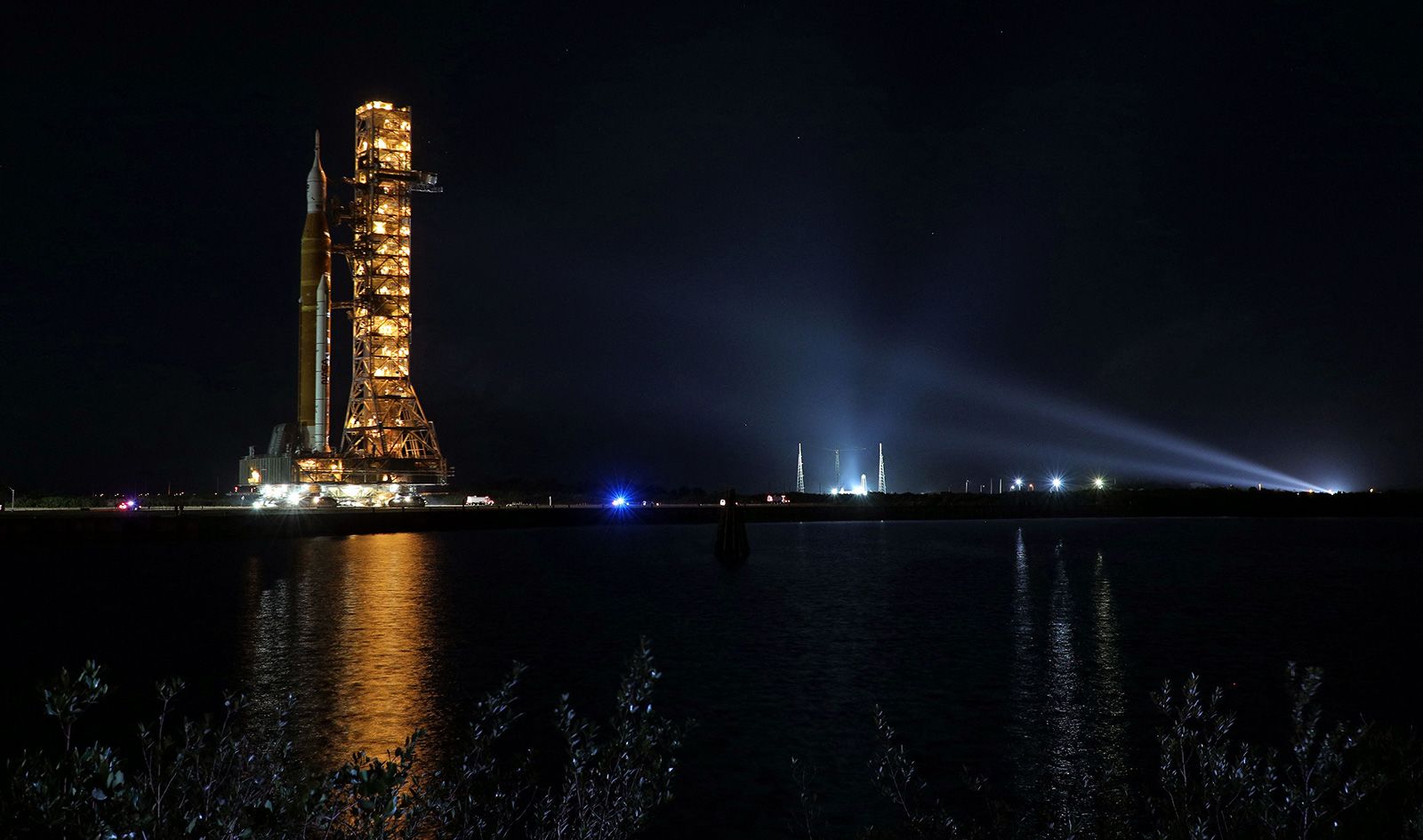In preparation for another launch attempt the following week, NASA’s enormous Space Launch System (SLS) is back on the launchpad.
As NASA works to launch the significantly delayed Artemis I mission to the moon, the whole globe waits in anxious anticipation.
A launch attempt for the unmanned test mission was announced last week, and that attempt will take place on November 14 at 12:07 am. ET, during a launch window that lasts for about an hour.
Potential Hurricane Nicole could threaten Artemis I rocket on the launch pad
In order to launch as early as next Monday, NASA decided to roll out its Artemis I rocket to the Kennedy Space Center’s launch pad. However, because the current Subtropical Storm Nicole is expected to develop into Hurricane Nicole by Wednesday, this might have an impact on NASA’s launch preparations.
Although it is now subtropical, meaning it draws its energy not from warm tropical seas but rather from the pressure and temperature differential created by an incoming high-pressure system to the north of Florida, the National Hurricane Center forecasts that by Wednesday when it nears Florida’s coast, it will become a tropical storm and intensify into a Category 1 hurricane.
A tropical storm warning was issued by the NHC Monday morning north of the county border into Georgia and a hurricane watch from the Brevard-Volusia county line south to Hallandale Beach.
Last week, NASA officials determined the danger to be worth the risk for deployment even if it was not as severe.
Space Launch Delta 45’s Weather Squadron Launch Officer Mark Burger claimed the system at the moment was only anticipated to produce persistent winds of 25-30 mph with gusts topping 45 mph during a news briefing ahead of the release that carried the 5.75 million-pound, a 322-foot-tall combo of the Space Launch System, Orion spacecraft, and mobile launcher from the security of KSC’s Vehicle Assembly Building to Pad 39-B on Friday morning.
In terms of the wind, he added, “Those were well within our restrictions of riding out, so we’ll have effects from that, but again, we’re not looking at any chance at this time of having a significant system come out of this.”
The rocket and capsule can endure prolonged winds of 85 mph on the launch pad, according to earlier statements from NASA officials.
According to the most recent prediction, however, Nicole may advance up the coast or make landfall near Florida’s east coast by Thursday morning, perhaps with sustained winds of 75 mph and 90 mph gusts.
“There are still a number of possible outcomes given the current course of this system. As the storm was still growing on Sunday, Michael Brennan, the acting deputy director of the NHC, warned that it may advance inland over parts of the Florida peninsula.
It may shift northward close to or around Florida’s east coast, or it may stay just offshore and travel closer toward the coastlines of Georgia and Carolina.
That will become more clear as the days go by, but because this system is still evolving, there will be a fair amount of uncertainty over the specifics of how it will move and grow.
SLD 45 updated its status to HURCON V, indicating surface winds faster than 58 mph might arrive within 96 hours. SLD 45 is in charge of Patrick Space Force Base, Cape Canaveral Space Force Station, and the eastern range over which rockets are launched.
The rocket on the launch pad may still experience wind due to the storm’s breadth, and KSC may sustain some damage that has to be evaluated before going ahead with any of the three scheduled launches. Tropical-storm-force winds are expected to continue for another 275 miles.
The first chance is on November 14th, with a 69-minute window beginning at 12:07 a.m. On Wednesday, November 16 beginning at 1:04 a.m., and on Saturday, November 19 beginning at 1:45 a.m., there are two two-hour backup windows available.
Since NASA decided in September to move the Artemis I hear back from the launch pad to the VAB in preparation for Hurricane Ian, it has remained there since then.
When the center of Ian really shifted directly between launch pads 39-A and 39-B, it was clear that the choice to safeguard the $4.1 billion rocket and the capsule was the correct one.
With Inputs from Orlandosentinel

